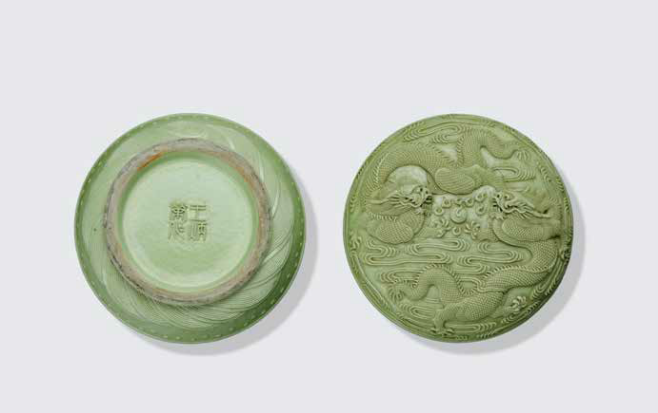![1]()
![2]()
Pendant in the form of a ferret, 16th century, Northern European. Gold, partly enameled, set with rubies and diamonds; pearls. Overall: 3 1/2 × 1 7/8 in. (8.9 × 4.8 cm). Gift of George Blumenthal, 1941; 41.100.26© 2000–2017 The Metropolitan Museum of Art.
The size of this jewel and related ones (see also 17.190.892; 17.190.893; 32.100.298; and 32.100.306) is such that only the closest viewer could appreciate their full beauty and dexterous execution; they represent the finest craftsmanship for the wealthiest patrons. Each combines gold with natural treasures, such as pearls and gemstones. Bulbous baroque pearls cleverly suggest the fluffy down of a swan’s underbelly or a cloudy mass supporting the Crucifixion. Tiny figures are enameled in the round. Melding the secular and the sacred, these jewels were made to be worn: pinned to garments or hanging close to their owners’ skin. The animals might be heraldic devices; the swan, for example, could symbolize the Society of the Virgin Mary, called the Order of the Swan, which was founded in mid-fifteenth-century Brandenburg in Germany. [Elizabeth Cleland, 2017]
![3]()
![4]()
The Crucifixion, 16th century, Northern European. Gold, partly enameled, set with Baroque pearl. Overall: 2 1/4 × 1 3/8 × 1/2 in. (5.7 × 3.5 × 1.3 cm). Gift of J. Pierpont Morgan, 1917; 17.190.892© 2000–2017 The Metropolitan Museum of Art.
The size of this jewel and related ones (see also 17.190.893; 32.100.298; 32.100.306; and 41.100.26) is such that only the closest viewer could appreciate their full beauty and dexterous execution; they represent the finest craftsmanship for the wealthiest patrons. Each combines gold with natural treasures, such as pearls and gemstones. Bulbous baroque pearls cleverly suggest the fluffy down of a swan’s underbelly or a cloudy mass supporting the Crucifixion. Tiny figures are enameled in the round. Melding the secular and the sacred, these jewels were made to be worn: pinned to garments or hanging close to their owners’ skin. The animals might be heraldic devices; the swan, for example, could symbolize the Society of the Virgin Mary, called the Order of the Swan, which was founded in mid-fifteenth-century Brandenburg in Germany. [Elizabeth Cleland, 2017]
![5]()
![6]()
Pendant in the form of a swan, 16th century, Northern European. Gold, partly enameled; pearls. Overall (with chain): 2 1/2 × 1 3/8 × 13/16 in. (6.4 × 3.5 × 2.1 cm). Gift of J. Pierpont Morgan, 1917; 17.190.893 © 2000–2017 The Metropolitan Museum of Art.
The size of this jewel and related ones (see also 17.190.892; 32.100.298; 32.100.306; and 41.100.26) is such that only the closest viewer could appreciate their full beauty and dexterous execution; they represent the finest craftsmanship for the wealthiest patrons. Each combines gold with natural treasures, such as pearls and gemstones. Bulbous baroque pearls cleverly suggest the fluffy down of a swan’s underbelly or a cloudy mass supporting the Crucifixion. Tiny figures are enameled in the round. Melding the secular and the sacred, these jewels were made to be worn: pinned to garments or hanging close to their owners’ skin. The animals might be heraldic devices; the swan, for example, could symbolize the Society of the Virgin Mary, called the Order of the Swan, which was founded in mid-fifteenth-century Brandenburg in Germany. [Elizabeth Cleland, 2017]
![7]()
![8]()
Justice, 16th century, Northern European. Gold, partly enameled, set with diamonds and emeralds; pearls. Overall: 4 5/16 × 3 in. (11 × 7.6 cm). The Friedsam Collection, Bequest of Michael Friedsam, 1931; 32.100.298 © 2000–2017 The Metropolitan Museum of Art.
The size of this jewel and related ones (see also 17.190.892; 17.190.893; 32.100.306; and 41.100.26) is such that only the closest viewer could appreciate their full beauty and dexterous execution; they represent the finest craftsmanship for the wealthiest patrons. Each combines gold with natural treasures, such as pearls and gemstones. Bulbous baroque pearls cleverly suggest the fluffy down of a swan’s underbelly or a cloudy mass supporting the Crucifixion. Tiny figures are enameled in the round. Melding the secular and the sacred, these jewels were made to be worn: pinned to garments or hanging close to their owners’ skin. The animals might be heraldic devices; the swan, for example, could symbolize the Society of the Virgin Mary, called the Order of the Swan, which was founded in mid-fifteenth-century Brandenburg in Germany. [Elizabeth Cleland, 2017]
![10]()
![11]()
Cross, 16th century, Northern European. Gold, partly enameled, set with diamonds. Overall: 2 3/4 × 1 9/16 in. (7 × 4 cm). The Friedsam Collection, Bequest of Michael Friedsam, 1931; 32.100.306 © 2000–2017 The Metropolitan Museum of Art.
The size of this jewel and related ones (see also 17.190.892; 17.190.893; 32.100.298; and 41.100.26) is such that only the closest viewer could appreciate their full beauty and dexterous execution; they represent the finest craftsmanship for the wealthiest patrons. Each combines gold with natural treasures, such as pearls and gemstones. Bulbous baroque pearls cleverly suggest the fluffy down of a swan’s underbelly or a cloudy mass supporting the Crucifixion. Tiny figures are enameled in the round. Melding the secular and the sacred, these jewels were made to be worn: pinned to garments or hanging close to their owners’ skin. The animals might be heraldic devices; the swan, for example, could symbolize the Society of the Virgin Mary, called the Order of the Swan, which was founded in mid-fifteenth-century Brandenburg in Germany. [Elizabeth Cleland, 2017]



























































